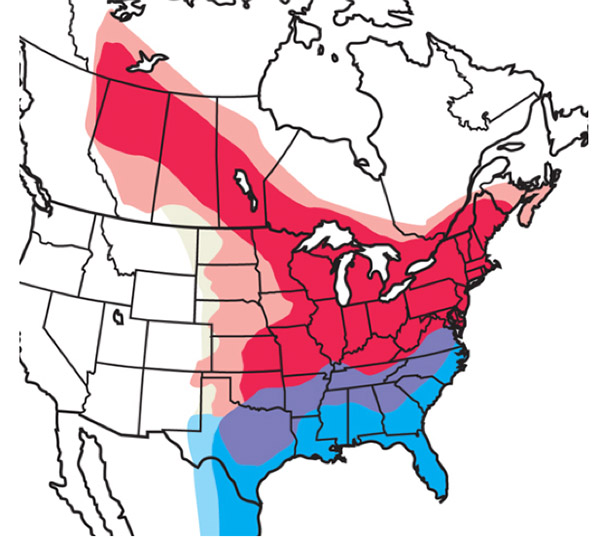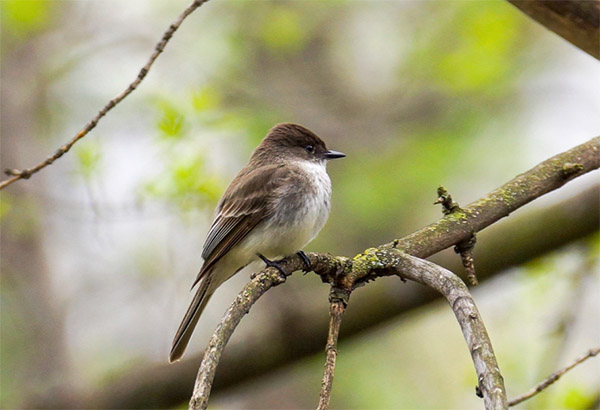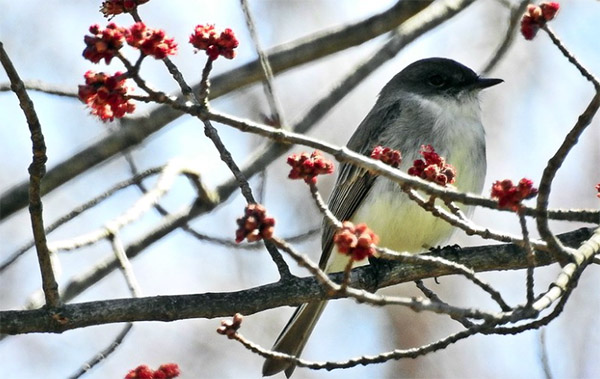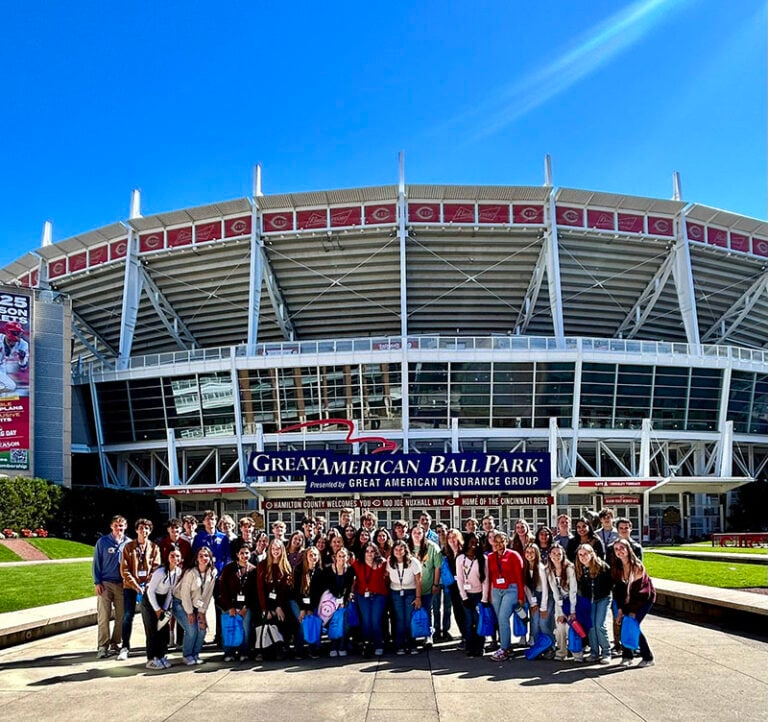Editor’s note: This is the twelfth article in an occasional series about Kentucky songbirds.
The Eastern Phoebe (Sayornis phoebe) nests here, but winters in warmer climes. They leave Kentucky late in the fall, but males return in March, and most breeding pairs are established by early April.
Thus, this long-distance migrant is among the earliest of Kentucky songbirds to arrive on their breeding grounds, according to The Kentucky Breeding Bird Atlas, by Brainard Palmer-Ball Jr. Winters are spent along the coast of North Carolina and South Carolina, south and west through Georgia, Florida, Alabama, Mississippi, Louisiana, Texas, and into eastern Mexico.

The Eastern Phoebe, a member of the family Tyrannidae, is a flycatcher, one of 10 species in Kentucky, first identified in the scientific literature in 1790 by ornithologist John Latham.
Geographic Range and Distribution in Kentucky
The native species is a common summer resident, found statewide, but most abundant in the Cumberland Plateau and Cumberland Mountains, in southeastern Kentucky.
Size and Coloration
The Eastern Phoebe is a small bird with a head that seems rather large, especially when it puffs up its small crest.
The bird’s overall length is 5.5 to 6.7 inches, weighing 0.6 to 0.7 ounces, with a wingspan of 10.2 to 11.0 inches.
Plumage is gray-brown above, with a white throat, dirty gray breast and brownish yellow (buff) underparts which become whiter during the breeding season.
There are two indistinct brownish-yellow bars present on each wing.
Its lack of an eye-ring, distinct wing bars, and dark bill distinguish it from other North American flycatchers.

The Eastern Phoebe’s call is a sharp chip, and its song, from which it gets its name, is a pronounced “fee-bee,” often repeated many times, with the second syllable alternately higher or lower than the first.
The Eastern Phoebe is similar in appearance to the Eastern Wood-Pewee (Contopus virens), another native flycatcher species that nests in Kentucky.
Habitat
The Eastern Phoebe is found in a wide range of forested and semi-open habitats, but is most abundant in extremely forested areas, often along rivers and creeks, with rocky shorelines.
Food Habits
The Eastern Phoebe forages by watching from a perch and flying out to catch insects. Most insects are caught in midair, some taken from foliage while briefly hovering, or while feeding on the ground.
Their summer diet is mostly insects, including small wasps, bees, beetles, flies, grasshoppers, and other bugs, occasionally spiders, ticks, and millipedes.
During the cooler months, small fruits and berries are eaten and are the mainstay of their winter diet.
Reproduction and Nesting

The Eastern Phoebe’s preferred nest sites are cliff lines along streams, rock outcroppings in the woods, cave entrances, rock shelters and large, deep sinkholes, anywhere there’s support below and some shelter above.
They also nest near human activity, under bridges, in barns, and under the eaves of porches and outbuildings.
Local populations are often limited by the availability of good nest sites.
The male defends its nesting territory by singing, especially at dawn. Occasionally one male may have two mates, and may help to feed the young in two nests at once.
Nest sites may be used repeatedly, with new nests built on top of an old one.
The nest is built by the female, an open cup with a solid base of mud below moss, leaves, grass, and is lined with fine grass and animal hair.
Nesting activity may start as early as the first days of April. Females lay two to six white eggs, sometimes with reddish-brown dots.
Incubation by the female lasts for about 16 days. Nestlings are fed by both parents. The young usually leave the nest about 16 days after hatching. Adults typically raise two broods per year.
The Eastern Phoebe is a gentle, almost tame little bird when nesting under the porch of a home on farms or semi-rural country.
Their song is a song of spring, welcome background music of contentment on warm mornings.






















